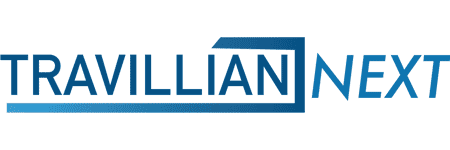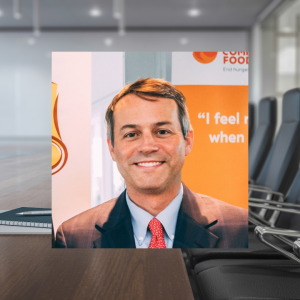Embedded Banking. Banking-as-a-Service. Embedded Finance. Whatever you want to call it, banks are both excited and skeptical about the recent upsurge in the adoption of this initiative. BaaS can lead to reaching underserved markets, increased deposit growth and fee revenue, and entering new geographies and hyper-specific communities. But it comes with risks and entering this space needs to be done cautiously and carefully.
Infinant, a Charlotte, N.C.-based technology company, offers a unique platform that is purpose-built for banks trying to pivot into BaaS. Brian Love, Head of Banking & Fintech at Travillian, sat down with Sarah Howell, SVP – Partner Programs at Infinant, to discuss their platform and other BaaS-related topics including:
- A Strategy for Pivoting to BaaS
- Risk & Regulatory Scrutiny
- Talent Need for Embedded Finance
- Recent Layoffs in the Industry
Banking on an Embedded Future: A Conversation with Sarah Howell, SVP Partner Programs at Infinant
00:16 | Intro
Brian Love: Hello everyone. This is Brian Love, Head of Banking and Fintech at Travillian, and I’m joined today by Sarah Howell, SVP Partner Programs at Infinant.
We got to know each other a little earlier this year, and then we encountered one another at the FedFis Roundup conference in Fredericksburg, Texas. Please introduce yourself a little more fully to our viewers.
Sarah Howell: I come from more of a payments background and stumbled into BaaS through seeing some prepaid business models early on back in the day.
Currently at Infinant and am very grateful to be working with the Infinant crew on building out a platform that enables both embedded finance and fintech.
02:17 | How Infinant Represents Traditional Banks Thinking About BaaS
Brian Love: We have banks reach out to us that say they are considering BaaS as an option. There’s not a week that goes by that it doesn’t come up in conversation with a more traditional bank thinking about deposit growth, fee revenue, and how to optimize that in a rising rate environment.
Generally, there’s one of two ways a bank can get started, but Infinant represents a third way. The first way is you build it yourself but that’s a huge lift and very expensive. It could take you three years or less, somewhere in that vicinity. The second option is reaching out to a middleware company like a lot of the BaaS banks have done, and that works extremely well.
Can you tell me more about Infinant and how they represent the third category?
Sarah Howell: Think of BaaS as the “how” and embedded finance as the “what”. Embedded finance is putting banking products into another software solution at a customer’s point of need. To your point, there are three different ways to go to market for BaaS. You can build it yourself, but not only is that a heavy tech lift, it’s also a heavy talent lift, a new operation model and business model that you’re evolving into all at once. I think that the BaaS API marketplace providers bring a lot of value to the market. Those platforms, in my opinion, were built for the Fintech or for the Neobanks, not necessarily for the banks.
What differentiates Infinant and what excited me about Infinant was that Infinant was built by people that used to do digital banking, understood banking, and have always traditionally built for banks. Infinant’s platform is purpose-built for banks.
04:44 | Strategy for Pivoting into BaaS
Brian Love: What are you hearing out there from your clients in terms of what makes them nervous about BaaS and about getting into embedded finance? How are you able to help them overcome hurdles?
Sarah Howell: I spoke to a bank yesterday that’s doing a little bit in BaaS already, and they asked us if we were going to help with their strategy. We don’t have a product for it, but they get us, our thoughts, and the way that we view the market.
Sometimes it’s not just an organizational change that banks are going through. It’s one thing to bring an organization through change, it’s another thing to bring an organization through change amid so much macro change happening in our environment.
We’ve got new payment rails evolving with RTP and Fed now that impacts BaaS and potential revenue streams. We have new CBDC, FIAT, and new forms of money evolving that will also impact what the BaaS strategy looks like. Then we also have what I like to call digital supply chain disruption. If you look at how digital supply chains were impacted in other industries like entertainment and music and telecom, the last-mile delivery for those products was disrupted. That’s why I can use Roku now to see all the different shows that I want to watch across Prime, Netflix, or my cable provider. That is last-mile supply chain disruption and if you think about it, embedded finance is the embodiment of that happening in our industry.
I don’t think that embedded finance in BaaS is going away. It’s something every bank will have to have a strategy where they own the last customer engagement. That last-mile delivery of their products to their customers. That’s the whole beauty of a community bank.
They’ll also have to have a strategy where they don’t own last-mile delivery, but they own the product. In the first model, the bank is a services and products org, and in the last model, the bank is a product org. Making those types of transitions internally is difficult.
I encourage banks whenever they are first pivoting into BaaS, to talk to a BaaS API provider. It’s good for your organization. Think about working with companies like Unit, Treasury Prime, and Synctera. Let it be a part of your strategy because it helps you adapt to the changes. It teaches you so much. But pay attention to the macro trends that are occurring because that model may not always be the best model for your financial institution.
09:10 | Risk & Regulatory Scrutiny
Brian Love: If you’re talking to a client, what advice do you have on the risk side?
Sarah Howell: I feel like we evolved here. We got to this because if you think about BaaS, the BaaS business model with the FBO settlement is really a new and shiny form of prepaid card additions. Our first real prepaid card was Green Dot, which back in 1998 was using TSYS stored value platform and Synovus as a BIN sponsor. This is back way before BaaS was ever sexy.
How do you do that? How do you manage a customer that’s embedding financial products when you don’t own the relationship with the technology provider? You do it by FBO. They’re not sitting on your system of record. You enforce some compliance across the ecosystem, but you don’t own that virtual ledger where all that customer data is. You must figure out new ways and data, create a data warehouse and data file, and pulls and dumps every day to try and get that customer information in.
You mentioned the regulatory scrutiny and that’s what’s scary, right? That’s what scares the regulators. It’s that the bank is responsible for an end customer whom they don’t own the technology for, whose information exists on a technology stack that they don’t own.
When I worked at Visa, I would get a FinTech and they would say, I want to manage my own platform. I’m going to go out and model a deal with a charter bank, and then I’m going to model a deal with a technology provider. And in that instance, who does a technology provider listen to?
They listen to their customer. It makes for a very difficult model to enforce regulation across that tri-party type of relationship. It’s doable, but I think that’s what’s causing a lot of regulatory scrutiny.
11:21 | Talent Need for Embedded Finance & Recent Layoffs in the Industry
Brian Love: What talent needs to be there as Infinant or whatever provider you deal with helps you get into this space? Who needs to be at the bank?
With our clients and potential clients around embedded banking, we make sure you have the right risk components in place first. Every bank most likely has a Head of Risk, a Chief Risk Officer, or something to that effect. But is that person also innovative? Does that person also understand FBO counts? Does that person understand payment rails and all those different nuances there? We always make sure to communicate that before you even get into this. Make sure there’s a nucleus of innovative risk talent.
What’s your take on who needs to be in what seats?
Sarah Howell: I think having people that have grown up in the industry makes it a little bit easier, but you want to find smart creatives. People that are able to see a business need and figure out a way to make technology meet that need.
I think the more you can have things automated and technology meeting that need, the greater it reduces your risk, or it mitigates your risk. But yes, as far as the type of talent to recruit, I do like those banks that form separate entities. It doesn’t have to be a completely different entity. It can just be a different business unit because what it does is creates an opportunity for the folks that join that business unit to think differently about banking. You do need that in BaaS. You need them to be able to think differently about banking. One of the questions that we got asked at the FedFis Roundup was who do you look for for talent when you’re in BaaS?
I responded by saying that you want to look for the people that can identify the embedded flows. When I worked at Visa, I had a really great Fintech that came to me and they were in the house flipping space. They were creating an operating system or project management system for home flippers.
They would help them purchase the home initially, then they would create a project plan, then would provide some funding for the construction loan. And then, whenever things started happening with Covid, they recognized the different opportunity and that was that you had a lot of these institutional investors that were looking to buy these homes. Then they used their platform to create a supply chain for those institutional investors.
They were just so creative. You want somebody that’s able to look at different industries and the software that they are standing up and find financial flows.
Brian Love: The culture of a bank could be fantastic or very off-putting if you’re going after tech talent. Could you tell me your thoughts on this and about current layoffs in the space?
Sarah Howell: Some of the CEOs in the fintechs that I worked with at Visa were ex-bankers and I wondered why they left the banking industry. My thesis is that organizations organize and highly regulated organizations like banks and big networks, card networks, or processors that have been in the business for a long time, they organize even more. There are tight regulatory constraints, and it makes it very hard for somebody that’s very creative to affect change in those types of organizations.
What happened was those people left and started their own fintech companies and they began to affect change from outside the organization and disrupt the industry as a whole. I think that things are coming full circle now with some of the layoffs, which are heartbreaking, but I do feel like it’s an opportunity for banks and those larger companies to recruit some good talent. But recognize why that talent was left in the first place and make sure that you’re giving them a voice. Don’t put them in a box.
Let them wear a lot of hats because if they’ve been in a fintech, they’re used to wearing a lot of hats. Give them a variety of projects so that they can identify connections across products our customer needs. Smart creatives can create connections and see connections before other people, so let them explore other areas of the organization because it will allow them to connect those dots. Then ask them to identify some efficiency gains across your direct business unit as a bank so when you own that last mile delivery and you own those customers, you can let them see how they could improve things.
Same goes for the BaaS business too. Bring them in and allow them to connect dots for the direct business side and then just listen to their ideas. You don’t have to implement every single one of them but just listening will earn respect and respect will go a long way in employee retention.
18:14 | Ideas, Inspiration & Thought Leadership
Brian Love: This industry has been plagued with some egos over time and it’s natural in almost every industry but suppressing that and empowering these types of talents to help affect change is so crucial to the relevancy of community banks over the decades to come.
When a smart creative comes in, allow them to look at your entire tech stack, and your entire operational flow, and there may be some great ideas with efficiencies, robotics, automation, etc. that someone else in the organization may not be able to see.
These people can get bored easily when we plug them into certain organizations, so they need to have a bigger vision than just wanting them to build out their BaaS division.
Where do you get your ideas and thought leadership from? Players that are exciting to you?
Sarah Howell: I look a lot at what happens in other regions and other countries. I think that a lot, especially happening in the EU with open banking, even though their regulatory bodies created some requirements and some guardrails that fostered greater adoption of open banking. Open banking still exists in the US because we’re a free-market economy and it just flows over. It just takes longer for us to do it because we live in a free country, which is great. I love that.
Our regulators are a little bit more hesitant to create those types of structures but that doesn’t mean that customers don’t get accustomed to some of those things, and that drives adoption just from a market perspective.
I look a lot about what’s happening in the EU, what’s happening in other countries relative to CBDC, the new payment rails that are being created, as well as what are some of the new products and what are some of the open banking APIs that banks are standing up in the EU? That’s one of the opportunities that Infinant’s platform provides, is it allows the bank to have their own developer portal, create their own products and be a little bit more above the core so you can be core agnostic, input the different partners that you want to have, and then say, okay, here’s one API for your loan origination.
And so that you build in the compliance and the technology all into that one API. I see that happening a lot in the EU already and so that informs some of my strategic thinking here for the US market.
Travillian’s Banking and FinTech Practice provides Search and Talent Advisory services to depository institutions across the country. Established in 1998, the firm has built a unique platform that touches every corner of the industry. To learn more, click here, or get in touch below!
|
Keith Daly, Principal -Banking & Fintech Search
(610) 908-5968 | kdaly@travilliangroup.com |






